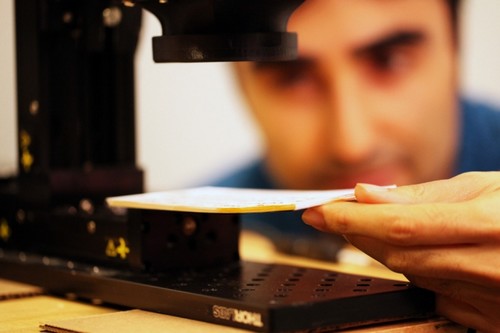Top 10 Futuristic Technologies of 2016
A range of perturbations from a diverse school of thoughts is often evinced by theadvancements of technology. Some have been made to believe that technology is a 21st-century imp that is rapidly trivializing our humanity while others have held a positive view of it as a way of bringing the world closer together.
Ever imagined of the future? Do you believe humanity will be acquiring all the right technologies for all the wrong reasons? Well, I believe in the art that challenges technology and technology that inspires the art. Ideally, the exponential increases in humanity’s technological capacities will radically metamorphose the future into a utopia or dystopia state. Only time will tell.
10. Perfect memory cameras to go ‘back in time.’

Shortly, we will be able to retroactively capture the missed moments just by the tap of a pocket-size 12-megapixel wearable device. How? The camera is at a continuous recording in its auto edit mode, therefore saving the footage from a set duration of time. The brainy idea developed by New York-based General streaming systems will also be capable of shooting a time-lapse photography.
It will be able to use Wi-Fi to wirelessly connect with a smartphone through the app to live-stream videos and photos. With this kind of technology, murder Crimes will be solved easily, and you won’t ever miss that magical moment your baby learned to call you ‘mom’ or ‘dad’!
9. Terahertz radiation device for reading closed books

The prototype device uses a band of electromagnetic radiation betweenmicrowaves and infrared light known as ‘Terahertz radiation.’ The T-rays will make it possible to read closed books, identify letters printed on stacks of paper up to nine sheets thick since they can be able to distinguish between ink and blank paper in a way that x-rays cannot.
This technology will greatly help researchers scan ancient books that may be too fragile to open and also lead to the creation of office machines that can scan reams of papers at once!
8. Handheld device to determine if the fruit is ripe

Ever bought fruit from your local fruit vendor especially an Apple thinking that it was ripe enough for your demanding appetite only to find out that it wasn’t ripe? Well, worry no more. Thank technology and more so M.I.T brains for curbing this common consumer problem. The device uses Ultra violet light to measure the glow of chlorophyll in the fruits skin. The dimmer the glow from the chlorophyll, the riper the fruit is as chlorophyll breaks down into other chemicals over time.
The device will help farmers decide the best time to harvest their crops and also assist Apple distributors who rely on guess works to decide where to send their stock as the ripest apples have to go to places where they are likely to sell out quickly.
7. ‘Slow Dance’ picture frame

Inspired by two of his friends who loved to dance, Lieberman crafted the first version of ‘slow dance’ as their wedding gifts. The wooden frame measuring 12.5 inches wide by 14.5 inches high, uses Strobe lights that blink at a rate that’s too fast for the human eye to register. The pulsing lights flicker on and off 80 times per second and are synced to vibrations that animate whatever object is suspended within the frame. While the light pulses are too fast to see, they combine with the high-speed vibration to imperceptibly vary the sequence of moving images, changing how they reach the eye and creating an illusion of movement that seems to be happening more slowly than normal.
According to Liebermann, the piece is a metaphor for all the unseen aspects of reality and is a constant reminder of things beyond what we see with our senses. The product is expected to ship in 2017!
6. Detection of sarcasm by the computers

Machines undergo a tougher time distinguishing sarcasm instinctively since they are typically programmed to read texts and access images based strictly on what they see. Computer Scientists have started to create a sarcasm-detection engine to teach computers that humans do not always mean what they say. This will help marketers tell whether one is praising or mocking their products and adjust their messages to sell you more stuff. Savvier computers could also help law enforcement agencies distinguish legitimate threats from those that exaggerate or poke fun at serious topics, such as Twitter, Instagram and Tumblr posts that use images.
It might even help automated customer service systems figure out whether you are upset and route you to a real person or allow politicians to sense whether their messages are resonating with voters.
5. Use of squids to self-fix clothes



No comments